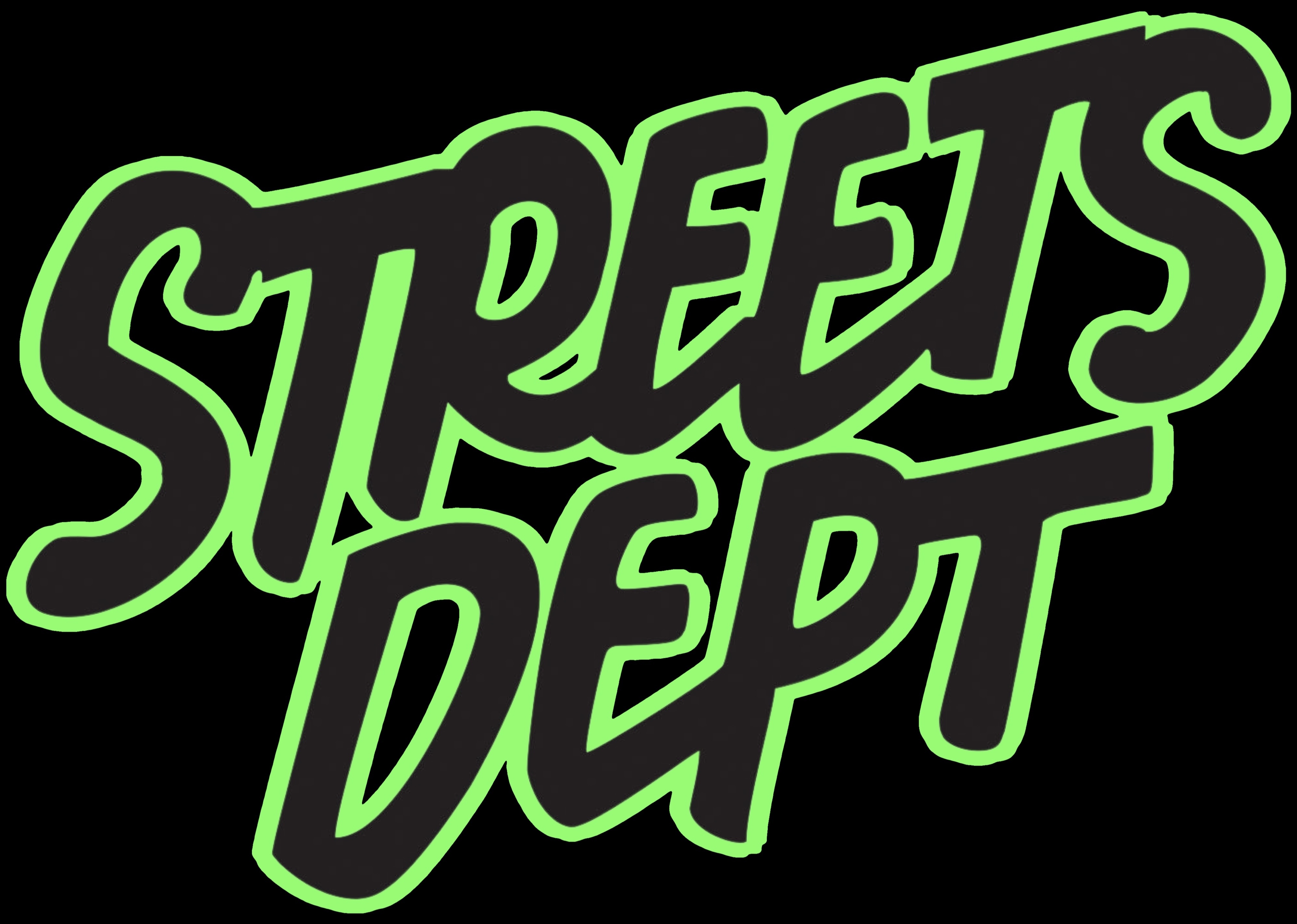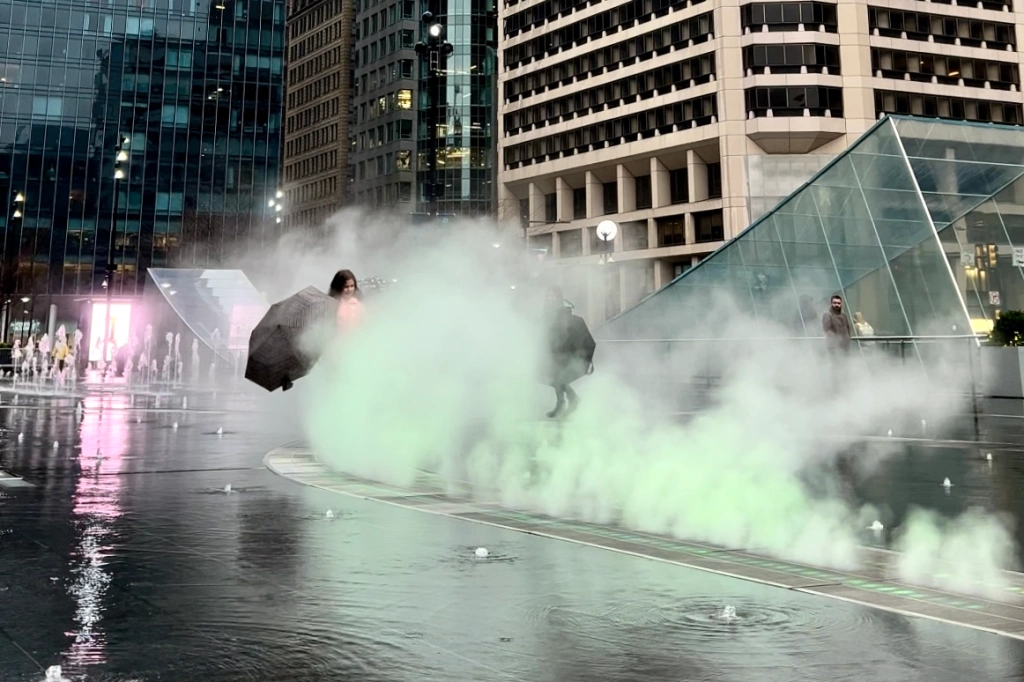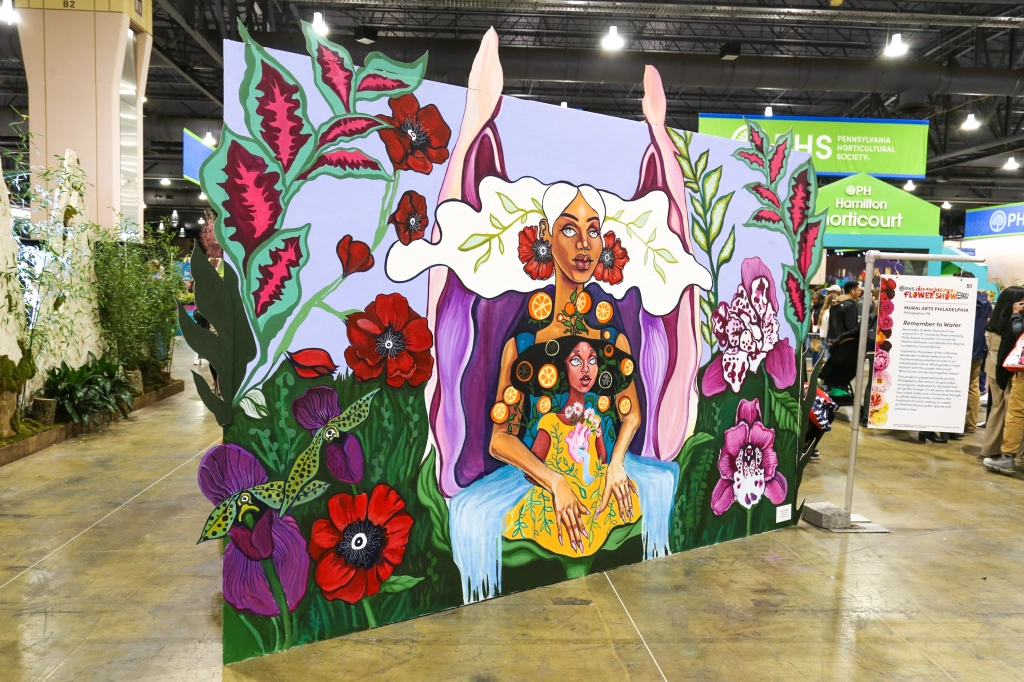A series of new installations this last week from a trio of Philly-area street artists has me thinking a lot about the flaws of a past public arts project from the Philadelphia Museum of Art.
Located on Juniper Street between Walnut and Locust Streets in the Gayborhood, the new installations pay homage to classic works of art from some of art history’s masters: Sean 9 Lugo creating a wheatpaste interpretation of the Raphael painting, St. Michael Vanquishing Satan; Nicole Nikolich (aka Lace in the Moon) yarnbombing a piece inspired by Vincent Van Gogh’s Vase with Twelve Sunflowers. And Gray Days with wheatpaste versions of René Magritte’s The Son of Man and Voluptas Mors by Salvador Dalí and Philippe Halsman.
“I waked past this spot every day on my way to work and [the cement cutouts] were perfect sizes for paintings, so I thought it would be great if we all re-created our favorite museum-quality works.” Gray Days explained the inspiration behind this new series over Instagram direct message. The artists even created frames for their works, with the exception of Nicole’s yarnbomb, to give the viewer the playful feeling of being in an outdoor gallery or museum. And, as I began writing this post, my memory took me back to another project that could have used these artists.
A few years ago, the Philadelphia Museum of Art (the “PMA”) created a public arts project that brought replicas of some of the museum’s most famous artworks onto the streets of Philadelphia. That project was called Inside Out, and it had a few iterations that ran in 2015, 2016, and 2017. I remember really liking the idea at the time. Hell, I even hosted a tour of some of the Inside Out installations for the PMA in 2016. Over time though, my thoughts on that project have evolved.
At its core, the PMA’s Inside Out project was the museum’s conceit that to reach more people they’d need to follow in the footsteps of street artists, who have been using the public space (usually abandoned spaces and construction walls) to get their art to the masses for many, many decades. And over the last number of years, social media, namely Instagram, has worked to double down on the effect street art can have in getting an artist’s work out there. Not only are people seeing and loving street art in real life, but they’re now sharing it and liking it online. A single wheatpaste, for example, can be seen by tens of thousands of people on Instagram within hours of it being put up.
Ultimately I think the popularity of street art on Instagram led to ideas like Inside Out coming from major arts institutions. The Barnes Foundation did something similar, also in 2017, but in a way I think was more successful, namely because they worked with contemporary artists. I mean, it’s probably part of the reason why I was invited by the PMA to host not only that tour of their project but also to promote an Instagram-centered contest that went with along with it. If enough Philadelphians weren’t going to come to the museum themselves, then the PMA would bring the museum to your neighborhood. And if you Instagrammed about it, all the better.
Now, I take the optimist’s view of all this. I think some creative people at the PMA had what they thought was a good idea to serve Philadelphians while also serving the museum’s interests, and they executed that idea. Unfortunately, with some hindsight it’s become clearer to me that while the project was trying to push the museum outside of its own silo, it really just took that silo and plopped it in a few different neighborhoods for a few months.
Looking back at Inside Out, I can’t help but think of how the museum missed a big opportunity to actually engage with Philly street artists who were already working were they wanted to be. The PMA has an enormous platform, and they could have used a project like Inside Out to not only celebrate the masters in their museum but also to elevate and pay talented contemporary artists living and working in Philly today. The project could have worked with Philly artists to interpret artworks from the museum and install those around Philly, kind of like the three artists in this post. The project’s core concept could have also just been flipped on its head, creating an “Outside In” and exhibiting contemporary Philly artists work on rotation inside the museum. In fact they could still do any of these ideas, or more.
If the art museum on the top of the hill wants to engage more Philadelphians, they should start by valuing the artists we having living in the city today. And truly, I hope they do.









Leave a comment